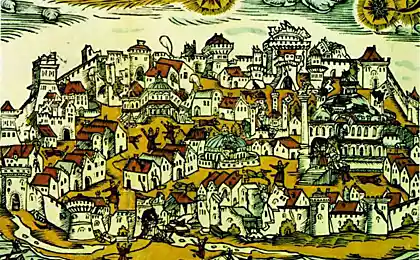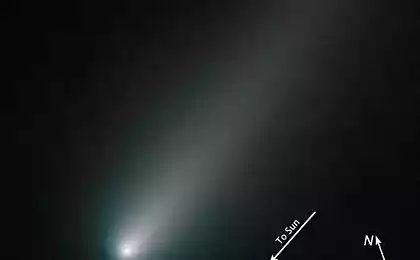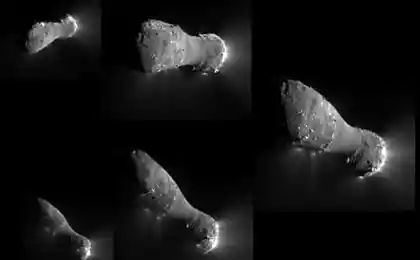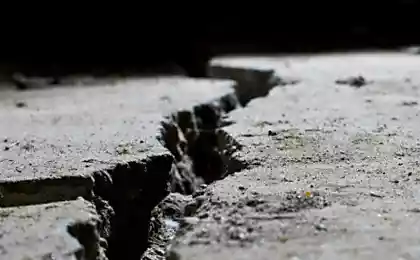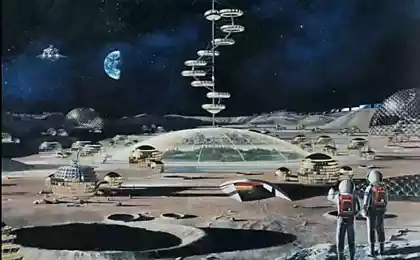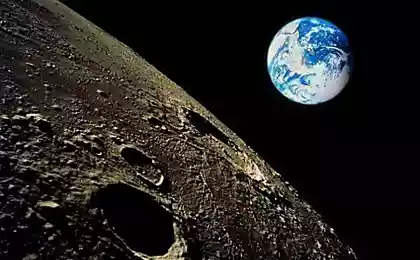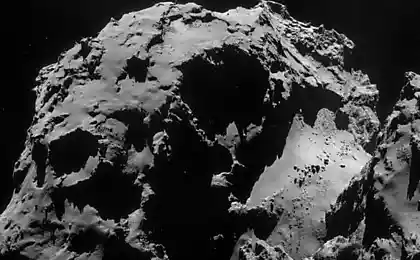644
The presence of turbulence on the Moon explained by collisions with comets

American researchers from Lawrence Livermore National Laboratory using detailed computer simulation confirmed the theory of the origin of the strange light turbulence on the surface of the moon, stating that it - traces of relatively recent collision of our neighbor with comets.
Especially large swirls telescopes craters seem strange shape - for example, a large trail called Reiner Gamma. But after 1966 the spacecraft Lunar Orbiter II, flying over the place, took a photo of Reiner Gamma, it became clear that this is anything but a crater.
It was an education in no way related to the topology of the surface (that is, at this point, no dips or hills), light in color with a good reflectivity.
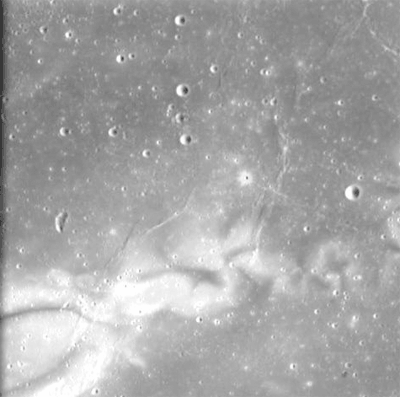
Then it was discovered two more twists that seem without purpose are centrally symmetric with respect to two large craters, Mare Imbrium and the East Sea.
Riddle intensified in 1972, when the satellites NASA, studied the magnetic field of the Moon, accidentally discovered that vortices observed a strong magnetic field - at the level of the surface it was about 100 times weaker than the Earth.
One of the scientists who have studied the Moon, Bob Lin of UC Berkeley, even suggested < / a>, that after the impact of a large asteroid on the moon in those ancient times, when she had a strong magnetic field, raises dust, which is a plasma (ie conducting the current cloud of fine particles), envelope the entire planet and settles on the opposite from hitting the side while keeping the magnetization.
But instead of a rather exotic hypothesis, Peter Schultz, studying the moon for more than 40 years, offers more than simple. Schultz said that when he was an amateur astronomer, loved viewed through a telescope Reiner Gamma. And when he thought about the reasons for the origin of this phenomenon, he drew attention to the traces of the landing of the lunar module. "You can watch how the surface around the lunar module becomes bright and smooth, because the gas from the engine cleans it - says Schultz. - That's why I started thinking about the fact that this could leave a trail of comet ».
Comets have their gas cloud, called "the coma." Schultz decided that a fall on the lunar surface cometary gas can disperse the lunar dust, and traces of it will be to remind the traces of the landing of the lunar module.
More in 1980, he and his colleagues published a paper , which suggested that these mysterious footprints on the moon are her from hitting the comet. And now, with the help of modern computers, it could simulate this situation.
The simulation showed a strong similarity with reality. Next fall the comet may stretch for hundreds of kilometers and have a wavy shape. In addition, such drop should melt fine particles of dust. And the iron-rich particles that were warmed up and then cooled, stored in itself to be present at the process the magnetic field.
It is known that comets have a strong magnetic field - in the fine particles of the "tail" of the interaction with the solar wind. A collision with the moon's magnetic field is amplified and stored in the molten particles of the lunar surface. According to calculations, the magnetic field soon after the comet impact could exceed 4 earthly order. This theory explains well and form eddies, and that they have a measurable magnetic fields.
Source: geektimes.ru/post/251586/
Canadian scientists tested the anti-influenza drug that kills the virus and treat the patient
The eye of the hurricane on Saturn: the video composed of pictures Cassini

